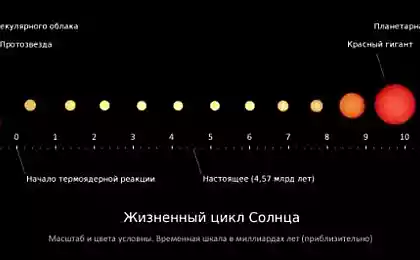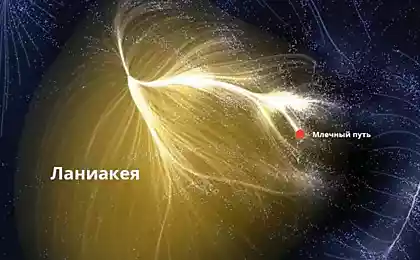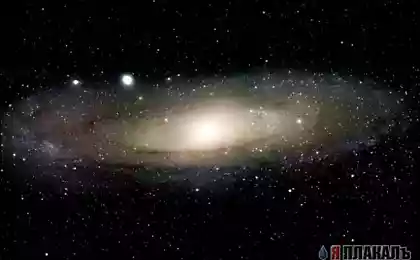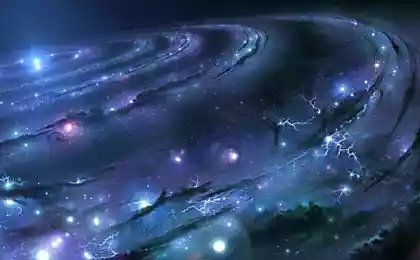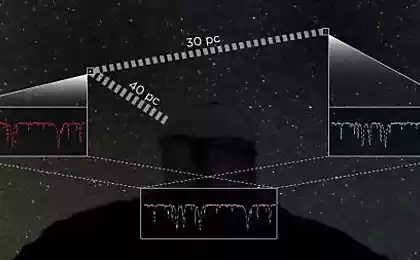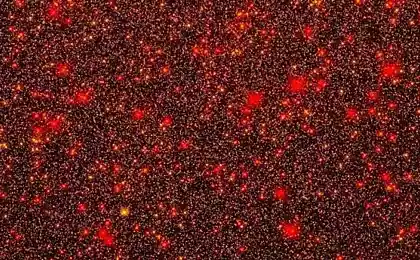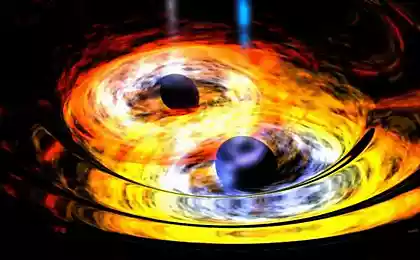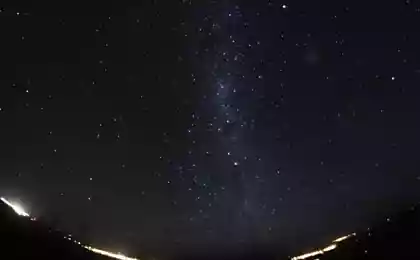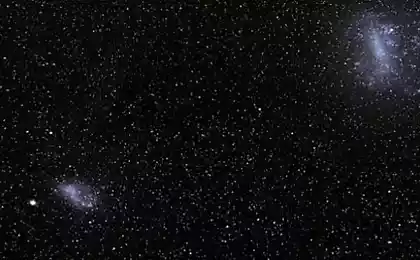896
10 record holders among stars

To paraphrase the famous classic, we can say that all the lucky stars are similar to each other, and the most incredible of them have peculiar problems. The universe is full of stars. But even among all this indescribable diversity, there are examples worthy of attention.
Long-lived stars
How long can a star live? To begin with, let’s define: by the lifetime of a star, we mean its ability to carry out nuclear fusion. Because the "cadaver of a star" can hang for a long time after the fusion is over.
Generally, the less massive a star is, the longer it will live. The stars with the least mass are red dwarfs. They can be between 7.5 and 50 percent solar. Anything less massive can’t fusion — and won’t be a star. Current models suggest that the smallest red dwarfs can shine for up to 10 trillion years. Compare that to our Sun, which will last about 10 billion years — a thousand times less. After the synthesis of most of the hydrogen, according to the theory, the light red dwarf will become a blue dwarf, and when the remnants of hydrogen are exhausted, the synthesis in the core will stop, and the dwarf will become white.
The oldest stars
The oldest stars are those that formed immediately after the Big Bang (about 13.8 billion years ago). Astronomers can estimate the age of stars by looking at their starlight — this tells them how much of each element is in a star (e.g., hydrogen, helium, lithium). The oldest stars tend to be composed mostly of hydrogen and helium, and a very small fraction of the mass is allocated to heavier elements.
The oldest observed star is SMSS J031300.36-670839.3. Its opening was reported in February 2014. Its age is estimated at 13.6 billion years, and it is still not one of the first stars. Such stars have not yet been discovered, but they could be. Red dwarfs live for trillions of years, but are difficult to detect. In any case, even if there are such stars, looking for them is like a needle in a haystack.
The dimmest stars
Which stars are the dimmest? Before we answer this question, let’s understand what “dull” is. The farther away you are from a star, the dimmer it looks, so we just need to remove distance as a factor and measure its brightness, or the total amount of energy emitted by the star in the form of photons, particles of light.
If we confine ourselves to stars that are still in the process of fusion, the lowest luminosity is in red dwarfs. The coldest star with the lowest luminosity is 2MASS J0523-1403. A little less light and we will enter the realm of brown dwarfs, which are no longer stars.
There may still be remnants of stars: white dwarfs, neutron stars and black holes. How faint can they be? White dwarfs are slightly lighter, but cool over time. After a certain time, they turn into cold pieces of coal, practically not emitting light - become "black dwarfs". To cool down, white dwarfs take a very long time, so they simply do not exist yet.
Astrophysicists do not yet know what happens to the matter of neutron stars when they cool down. Observing supernovae in other galaxies, they can assume that our galaxy should have formed several hundred million neutron stars, but so far only a small fraction of this number has been recorded. The rest had to cool down so much that they were invisible.
What about black holes in deep intergalactic space that have nothing in their orbit? They still emit a bit of radiation known as Hawking radiation, but there's not much of it. Such lonely black holes probably glow less than the remnants of stars. Do they exist? Maybe.
The brightest stars
The brightest stars also tend to be the most massive. They also have a custom of being Wolf-Rayet stars, which means they are hot and drain a lot of mass into a strong stellar wind. The brightest stars also don’t live very long: Live fast, die young.
The brightest (and most massive) star is R136a1. Its opening was announced in 2010. It is a Wolf-Rayet star with a luminosity of about 8,700,000 solar masses 265 times that of our home star. It was once 320 solar masses.
R136a1 is actually part of a dense cluster of stars called R136. According to Paul Crowther, one of the discoverers, "Planets take longer to form than such a star to live and die." Even if there were planets, there would be no astronomers on them, because the night sky was as bright as the day sky.
Biggest stars
Despite its massive mass, R136a1 is not the largest star. There are many larger stars, and they are all red supergiants — stars that have been much smaller all their lives until hydrogen ran out, helium synthesis began, temperature rises and expansions began. Our Sun will eventually have this fate. The hydrogen will run out and the star will expand into a red giant. To become a red supergiant, a star needs to be 10 times more massive than our Sun. The red supergiant phase is usually short, lasting only a few thousand to a billion years. That's a bit by astronomical standards.
The most famous red supergiants are Alpha Antares and Betelgeuse, but they are quite small compared to the largest. Finding the largest red supergiant is a fruitless endeavor, because the exact sizes of such stars are difficult to estimate for sure. The largest ones should be 1,500 times wider than the Sun, and maybe more.
Stars with the brightest explosions
High-energy photons are called gamma rays. They are born as a result of nuclear explosions, so some countries launch special satellites to search for gamma rays caused by nuclear tests. In July 1967, such satellites, authored by the United States, detected a gamma ray explosion that was not caused by a nuclear explosion. Since then, many more such explosions have been discovered. They are usually short-lived, lasting only a few milliseconds to a few minutes. But very bright — much brighter than the brightest stars. Their source is not on Earth.
What causes gamma ray explosions? I'm guessing. Today, most speculation boils down to the explosion of massive stars (supernovae or hypernovae) in the process of becoming neutron stars or black holes. Some gamma-ray bursts are caused by magnetars, a kind of neutron star with a very strong magnetic field. Other gamma-ray bursts may be the result of two neutron stars merging into one or a star falling into a black hole.
The Coolest Ex-Stars
Black holes aren’t stars, but their remnants — but they’re fun to compare to stars because they show how incredible both can be.
A black hole is what forms when a star's gravity is strong enough to overcome all other forces and cause the star to collapse into itself to a singularity point. With a non-zero mass but zero volume, such a point would theoretically have infinite density. However, infinities are rare in our world, so we simply don’t have a good explanation for what happens at the center of a black hole.
Black holes can be extremely massive. The black holes found at the centers of individual galaxies could be tens of billions of solar masses. Moreover, the matter orbiting supermassive black holes can be very bright, brighter than all the stars in galaxies. Near a black hole there may also be powerful jets moving at almost the speed of light.
Fastest moving stars
In 2005, Warren Brown and other astronomers at the Harvard-Smithsonian Center for Astrophysics announced the discovery of a star so fast-moving that it flew out of the Milky Way and would never return. Its official name is SDSS J090745.0+024507, but Brown called it a "rogue star."
Other fast-moving stars have been discovered. They are known as hypervelocity stars, or superfast stars. As of mid-2014, 20 such stars have been discovered. Most of them seem to come from the center of the galaxy. According to one hypothesis, a pair of closely related stars (a binary system) passed near the black hole at the center of the galaxy, one star was captured by the black hole and the other was ejected at high speed.
There are stars that move even faster. In fact, generally speaking, the farther a star is from our galaxy, the faster it is moving away from us. This is due to the expansion of the universe, not the movement of a star in space.
Most variable stars
The brightness of many stars varies greatly when viewed from Earth. They are known as variable stars. There are many of them: in the Milky Way galaxy alone, there are about 45,000 of them.
According to Professor of Astrophysics Coel Helier, the most variable of these stars are cataclysmic, or explosive, variable stars. Their brightness can increase by factor 100 during the day, decrease, increase again, and so on. Such stars are popular with amateur astronomers.
Today we have a good understanding of what happens to cataclysmic variable stars. They are binary systems in which one star is a normal star and the other is a white dwarf. Matter from an ordinary star falls on an accretion disk that orbits a white dwarf. After the disk mass is high enough, synthesis begins, resulting in an increase in brightness. Gradually, the synthesis dries up and the process begins again. Sometimes the white dwarf is destroyed. There are plenty of development options.
The most unusual stars
Some types of stars are very unusual. They don't have to have extreme characteristics like luminosity or mass, they're just weird.
Like, for example, Thorne-Zhitkov objects. They are named after physicists Kip Thorne and Anna Zhitkov, who first suggested their existence. Their idea was that a neutron star could become the core of a red giant or supergiant. The idea is incredible, but... such an object was recently discovered.
Sometimes two large yellow stars circling so close together that regardless of the matter that lies between them, they look like giant cosmic peanuts. Only two such systems are known.
Przybylski's star is sometimes cited as an example of an unusual star because its starlight is different from that of any other star. Astronomers measure the intensity of each wavelength to figure out what a star is made of. This is usually easy, but scientists are still trying to understand the spectrum of Przybylski’s star.
In the Volgograd region implement a pilot eco-project
Millions of jellyfish-like creatures stranded in California

